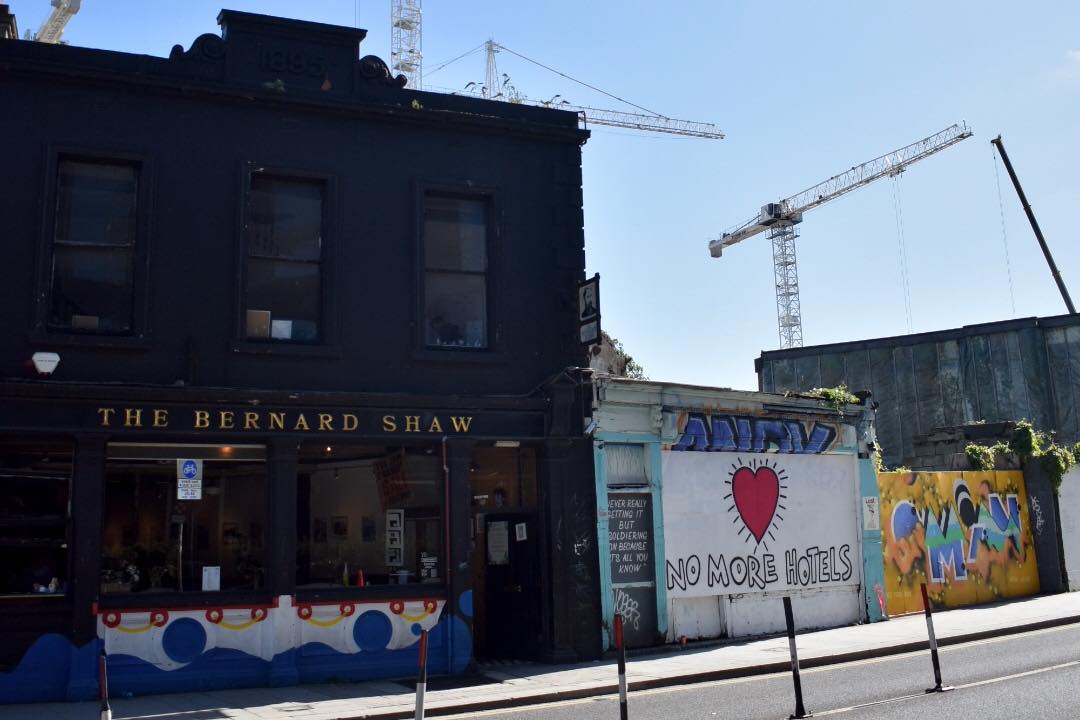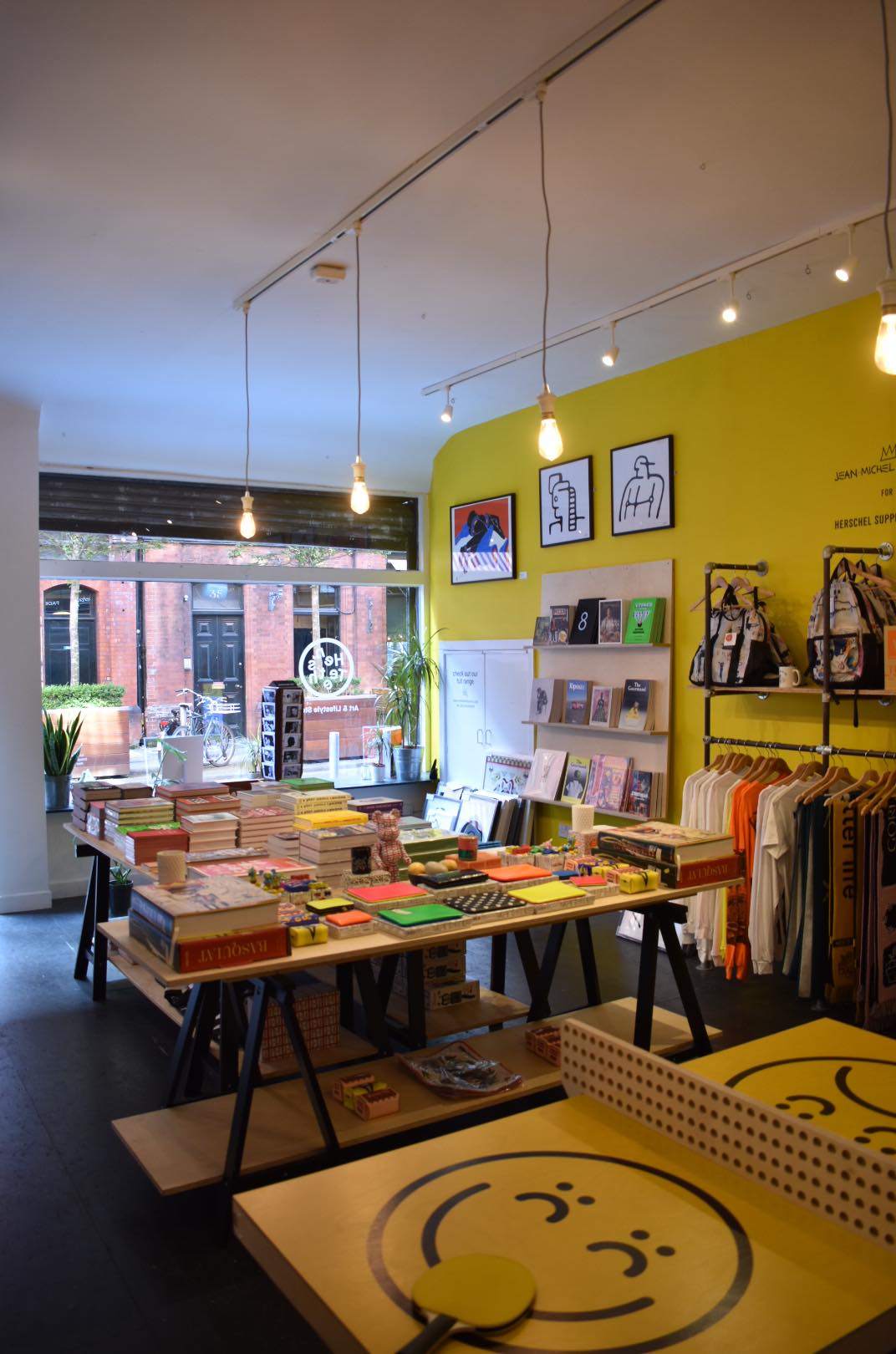
At the end of October, the Bernard Shaw’s South Richmond St premises will close permanently. The news was announced on September 9th and prompted an emotional response from the people of Dublin. I’ve lived in Dublin for three years, and in this short period of time, there have been a number of high-profile closures.
When Hangar shut down in May last year, windbreaker-wearing techno heads lost their favourite haunt. When the Tivoli Theatre closed, the city mourned for one of the Liberties’ crowning jewels. When the Longstone closed last year, after 264 years in business, Trinity students lost their longest-standing local. The list goes on, and although the city has lost a multitude of cultural spaces over the last few years, the closure of the Bernard Shaw has incited a sense of outrage that I’ve never seen before in my time in Dublin.
The closure of the pub, which is part of the Bodytonic group, is the final straw for Dubliners. The public have arrived at a unanimous conclusion: Dublin is in the midst of a cultural crisis. We’re all wondering if the city is doomed to become one enormous hotel. As it stands, it has very little space for creative communities, and the destruction of another cultural hub is a frustrating sight.
Many believe that An Bord Pleanála, Dublin City Council and the all-powerful hotel industry are to blame for the drastic decline of cultural spaces in Dublin. In an email statement to The University Times, Trevor O’Shea, the founder and chief executive of Bodytonic, writes: “We’ve been forced out of the Shaw due to ABP ruling we don’t fit in with our area anymore. They want to see more offices and hotels in they feel Wetherspoons suits the street more than we do.”
Amazingly, the board insists that it has little to do with the shutting down of cultural venues. In an email statement to The University Times, a spokesperson for the board says: “The Board would be far less involved in this than Dublin City Council. The Board would not have anything like the level of information about this subject than the Council would have so you should contact that body.”
We’ve been forced out of the Shaw due to An Bord Pleanála ruling we don’t fit in with our area anymore
The council, however, claims that it hasn’t closed any cultural venues in the city in favour of erecting hotels, offices or student accommodation. In an email statement to The University Times, a spokesperson writes: “Recent office, hotel and student accommodation construction in the city has invariably been on longstanding, unsightly vacant/underused sites and have not resulted in the wholesale displacement of social /cultural uses as stated in some media. Rather, they have contributed to employment and vitality in the city and are part of the rich fabric and character of the city as it evolves.”
Many of Dublin’s creatives don’t see this evolution as a positive thing. Sunil Sharpe, an international DJ and co-founder of Give Us The Night, an organisation dedicated to the protection and promotion of Dublin nightlife, believes that the council’s comments regarding venue closures are misleading. Speaking to The University Times, he says that “the likes of the Dublin City Council saying that the outlets for creative expression and cultural spaces are all well represented – I think we can do without those kind of comments, because it’s clear that most of our best venues have been shut down over the last year and that has been green-lit by the council”.
The Dublin City Development Plan 2016–2022 is also, in Sharpe’s estimation, not up to scratch: “I think the plans within Dublin City Council – the last Dublin City Plan – were mostly all talk.” Sharpe raises an excellent point: the Development Plan does not seem to reflect the actions of the council. For example, the plan states that the “Liberties is regarded as the key cultural/creative quarter of the city”. It adds that the council aims to “promote the Liberties as an area of historical, archaeological, industrial and cultural heritage in Dublin City”. It seems incongruous, then, that the Tivoli Theatre, a cultural cornerstone of the Liberties and home to District 8, a vastly popular nightclub, was knocked down and replaced with an aparthotel at the start of this year. Something doesn’t add up.

While the Liberties is described as a “key cultural/creative quarter”, the area seems to be one of the most heavily impacted by fast-paced gentrification. Hen’s Teeth, an independent organisation dedicated to creating and nurturing culture in Dublin, will soon move from its current space on Fade St to the Tannery, a much larger space based in the Liberties. Speaking to The University Times, Greg Spring, founder and creative director of Hen’s Teeth, says that “the building we’re going into is adjacent to the student accommodation there. That brought us right back to the heart of the issue”. He reveals that the organisation’s new home was originally zoned for offices. “We quite passionately argued, it’s entities like ours, business like ours, that started out in the recession, weathered the storm, cut our teeth in Dublin 8, that should be going back into that area.”
Though Spring and his team of curators, designers and artists were able to secure their new space in the Liberties, they’ve had to think outside the box in order to fund the move. “We’ve never received any funding, privately or otherwise – so, we thought, rather than going down the route of bank loans, crowdfunding would be a good idea.” He outlines the severity of the financial demands on the city’s cultural hubs: “I mean, massive, massive rents. I’m 39 now, and to make this move, I’ve moved back in with my mum for four or five months just to make it happen.” He notes the “pain of paying €1,800 a month in rent”, stating that it’s “napalm to creativity as well, when you’re worrying about money all the time”.
The company is hoping to raise €40,000 to set up its new space and has already raised over half of this goal sum. “We’ve got this really amazing community around us”, Spring says, “a community of artists that we work with. And then we have a very loyal customer base that come to all of our shows and really dig what we do”. In a seemingly bleak cultural landscape, Hen’s Teeth’s crowdfunding initiative highlights the support that Dublin creatives have, not from governmental bodies, but from local people.
That’s what the Bernard Shaw did. It gave you that space to make mistakes, do things, then do them a little better next time
It’s because of this strong artistic community that Spring, O’Shea, and Sharpe all believe that Dublin’s cultural scene will continue to thrive, despite the increasing number of closures in the city. Each one stresses the vitality and resilience of Dublin’s creative community, and their own determination to keep this community alive. Sharpe is quick to praise the Bernard Shaw and its sister establishments for their role in building a sense of community: “We need to look for ways to establish spaces that involve the local community. Bodytonic are one of the kings of this. As far as it goes, in Dublin at the moment, they’ve created the prototype for what a multipurpose space can be. They’ve proved how popular it can be as well.”
Above all else, Hen’s Teeth’s new space is designed to nurture community: “We feel buzzed about creating, not just a store, but more of a kind of neighbourhood hangout. A place to go and buy some records, check out a gallery show, have some lunch. I think we want to create more of a destination, more of an experience than just a store.” The “community” that Spring, O’Shea and Sharpe search for is not an unquantifiable, wishy-washy concept, but a solid, represented body within Dublin.
The results of community-focused projects can be seen throughout Dublin’s cultural sphere. In fact, it was the Bernard Shaw’s community-driven efforts that laid the foundations for Hen’s Teeth: “Back in 2008, we ran a weekend festival there. I mean, it was awful, but we were figuring things out. That’s what the Bernard Shaw did. It gave you that space to make mistakes, do things, then do them a little better next time. We ran podcasts out of there, we started DJing in there, I think they gave me my second gig. We’ve done so much in that space.”
Although Dublin’s city centre is becoming less and less hospitable for these creative communities, the cultural landscape continues to diversify and adapt. When asked if Dublin culture is dying, Spring says that “you’ve got Hang Tough Gallery, you’ve got Maser Atelier, you’ve got Studio39, which is a more DIY space that’s just opened up. Now that, to me, is a sort of contemporary art trail in Dublin 8”.
By all accounts, space for culture in the city centre is at an all time low, and frustration among Dublin’s creatives is sky high. The forecast seems bleak, but the trend among Dublin’s cultural communities is clear: if the city centre is set to become a conglomeration of hotels, luxury student apartments and office blocks, then Dublin’s cultural spaces will move.
On September 20th, the news of the Bernard Shaw’s reopening in Porterhouse Whitworth in Phibsborough was announced. In the space of 11 days, the Shaw was pronounced dead and then resurrected. This is, above all else, evidence of the resilient community that O’Shea, Sharpe and Spring so often refer to. O’Shea states: “Dublin culture isn’t dying, it’s just relocating.”






